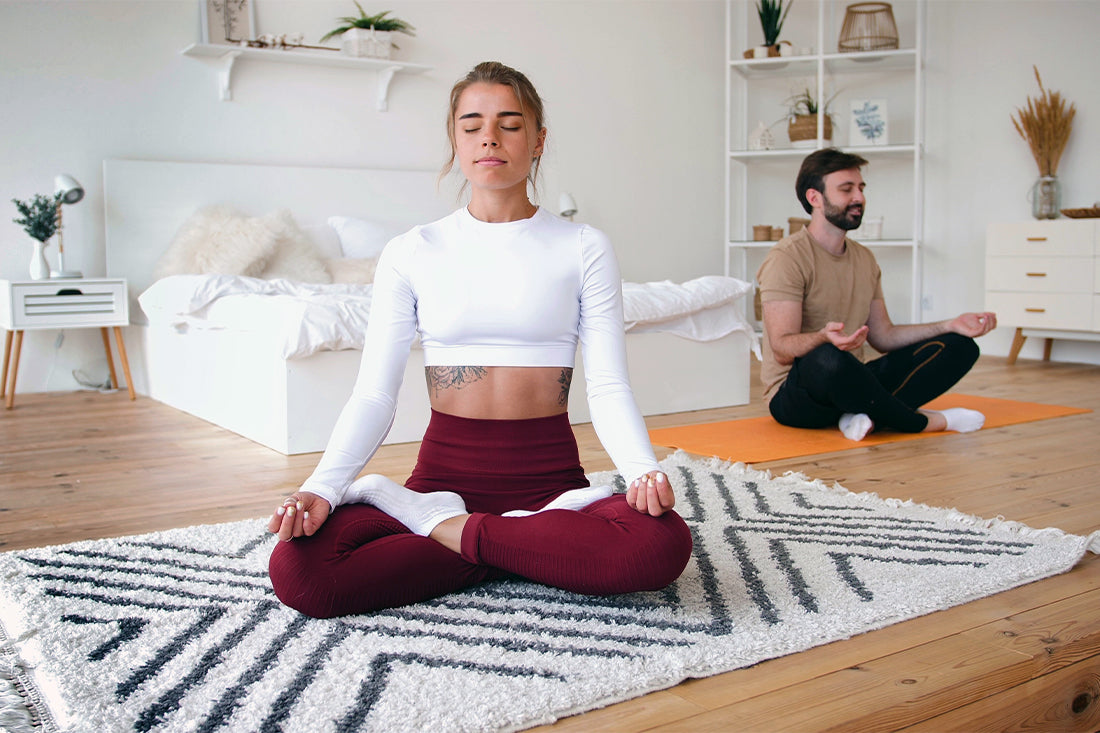Struggling to fall asleep at night? You are not alone. For many, the nightly battle to drift off can feel like an endless cycle of tossing, turning, and staring at the ceiling. But what if a simple practice could help break the cycle? Enter yoga: a centuries-old practice that might just be the key to reclaiming restful nights. In this blog, we will explore the effect of yoga on sleep, including how specific yoga poses and deep breathing can improve sleep quality and transform your nights for the better.
The Science Behind Yoga and Sleep
Yoga is not just about flexibility or mastering challenging poses. It is a holistic practice that combines movement, mindfulness, and deep breathing to create balance in the body and mind. Research shows that regularly practicing yoga can assists in calmness, better sleep efficiency, and a noticeable difference in sleep disturbances. This is because yoga helps calm the nervous system, tackling the overactivity that often keeps us awake.
For instance, hatha yoga, a gentle and beginner-friendly type of yoga, has been shown to be particularly effective for supporting relaxation and preparing the body for rest. By focusing on slower movements and deep breathing, hatha yoga activates the parasympathetic nervous system the body’s “rest-and-digest” mode which is essential for winding down.
How Yoga supports Sleep Quality
The benefits of yoga for sleep extend beyond simply helping you fall asleep faster. Here are some key ways it makes a difference:
- Manage Stress: Stress is a major culprit behind sleep disturbances. Practicing yoga lowers cortisol levels, helping you feel more relaxed before bedtime.
- Better Sleep Duration: Studies have shown that incorporating yoga into your routine can increase the amount of time you spend in restorative sleep stages.
- Support Sleep Efficiency: Yoga can help you stay asleep longer and minimize interruptions, assisting the overall efficiency of your sleep cycle.
- Aiding Quality of Life: Over time, good sleep leads to better mood, focus, and physical health, significantly supporting your quality of life.
Yoga Poses for Better Sleep
If you are new to yoga or looking for poses specifically tailored to combat insomnia, here are a few to try:
- Viparita Karani (Legs Up the Wall Pose)

This restorative pose is a game-changer for calming the mind and body. Simply lie on your back with your legs extended up against a wall. This position supports relaxation, aids blood pressure regulation, and encourages deep breathing all essential for falling asleep.
- Child’s Pose (Balasana)

A comforting pose, Child’s Pose gently stretches the back and hips while encouraging slow, mindful breathing. It is perfect for managing stress and grounding yourself before bed.
- Cat-Cow Pose (Marjaryasana-Bitilasana)

This gentle flow between two poses helps release tension in the spine and synchronize breath with movement. It is a great way to unwind after a long day.
- Seated Forward Bend (Paschimottanasana)

This pose helps stretch the back of your body while aiding relaxation. It is especially beneficial for calming an overactive mind.
Types of Yoga for Better Sleep
Not all types of yoga are created equal when it comes to addressing insomnia. Here are the most effective styles:
- Hatha Yoga: With its slow pace and focus on gentle poses, hatha yoga is ideal for beginners and for preparing the body for sleep.
- Restorative Yoga: This deeply relaxing style involves holding poses for extended periods, using props for support. It is perfect for managing stress and aiding sleep quality.
- Yin Yoga: Similar to restorative yoga, yin yoga focuses on stretching the connective tissues and supporting stillness, making it great for winding down.
Yoga for Older Adults and Sleep
Insomnia is particularly common among older adults, often due to changes in sleep patterns, stress, or other health conditions. The good news? Yoga can be a gentle, side-effect-free way to address these issues. Studies have shown that older adults who regularly practice yoga experience better sleep duration, fewer disturbances, and assists overall well-being. Plus, yoga’s low-impact nature makes it accessible to people of all fitness levels.
Tips for a Successful Yoga Routine
To get the most out of yoga for better sleep, keep these tips in mind:
- Practice Regularly: Consistency is key. Aim to practice yoga several times a week to see long-term benefits.
- Time It Right: Evening yoga sessions are best for supporting relaxation and preparing your body for rest.
- Create a Calming Environment: Dim the lights, play soothing music, and use a mat or blanket for added comfort.
- Focus on Deep Breathing: Incorporate slow, intentional breaths into each pose to activate your relaxation response.
- Listen to Your Body: Yoga is not about perfection. Modify poses as needed and focus on what feels good for you.
The Long-Term Benefits of Yoga for Sleep
While yoga offers immediate benefits, the long-term effects are even more profound. By consistently practicing yoga, you can:
- Experience fewer sleep disturbances over time.
- Support your overall sleep efficiency and duration.
- Assists your mental and physical health, contributing to a higher quality of life.
- Enjoy a natural, side-effect-free alternative to addressing sleep issues.
Final Thoughts: Yoga as a Sleep Solution
So, does yoga help with insomnia? Absolutely. From calming the mind with deep breathing to relaxing the body with restorative poses like Viparita Karani, yoga provides a holistic approach to supporting sleep quality. Whether you are dealing with occasional restlessness or chronic sleep disturbances, incorporating yoga into your routine can be a gentle, effective solution.
Ready to give it a try? Roll out your mat, take a few deep breaths, and let yoga guide you to peaceful, restorative sleep night after night.






